History of the Wyandot Nation in Kansas Historical Marker
Introduction
Text-to-speech Audio
This set of twelve historical markers offers a detailed history of the Wyandot Nation and was authored by members of the tribe. The Wyandot were among several tribes removed from their homelands in the east to reservations in Kansas. Historically found as far north as modern-day Quebec and Ontario, they settled mostly in Michigan and Ohio after European expansion. In 1842, all Wyandot lands were ceded to the federal government in exchange for lands west of the Mississippi, which were never granted to them. Instead, the Wyandot purchased land near the Kansas River. Congress declared that Kansas Territory was "open for the settlement of American citizens and immigrants of primarily European descent in 1854, again removing the Wyandot and other Native American tribes further west.
Images
The 12 historical markers share the history of the Wyandot
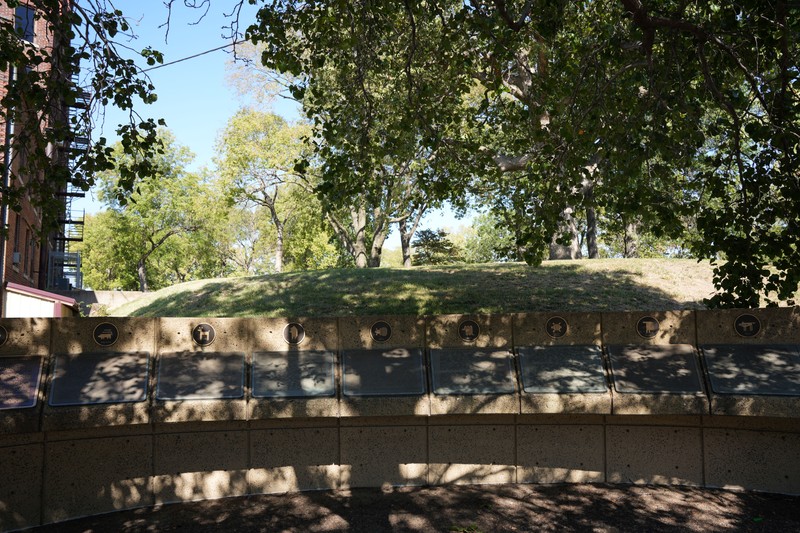
William Walker, Jr, a leader of the Wyandot nation in Kansas
.jpg)
Native American lands and reservations in Kansas
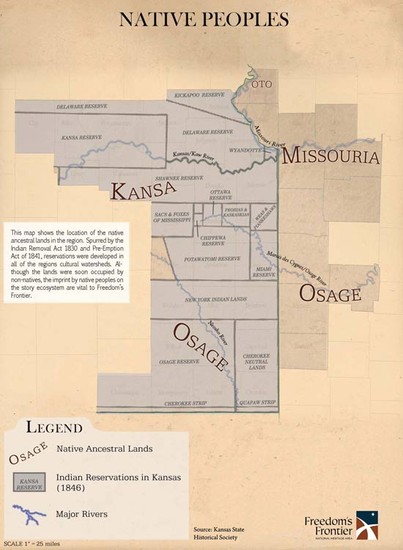
Wyandot diaspora throughout North America
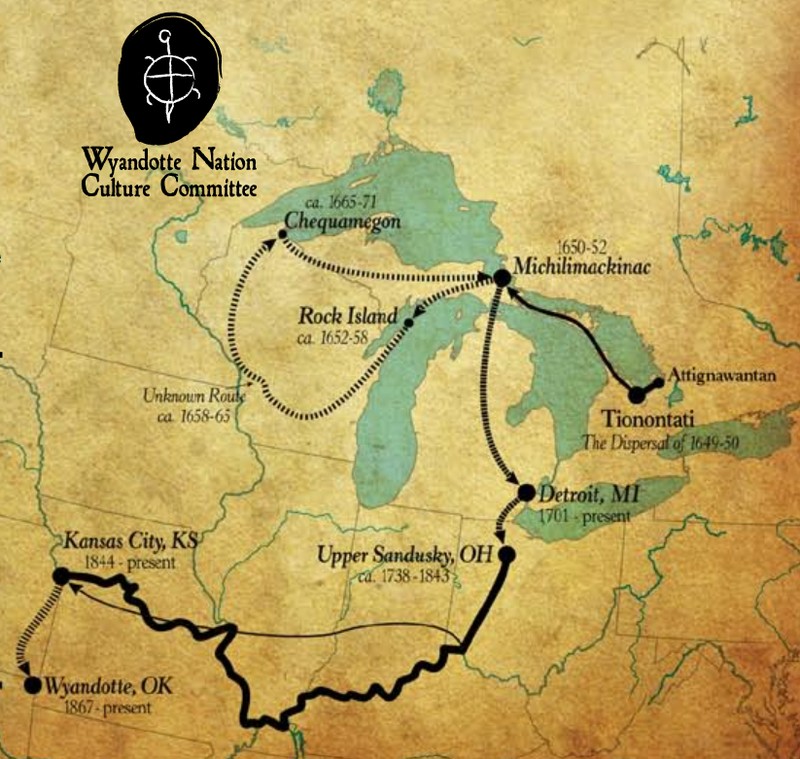
The Wyandot purchase after arrival in Kansas
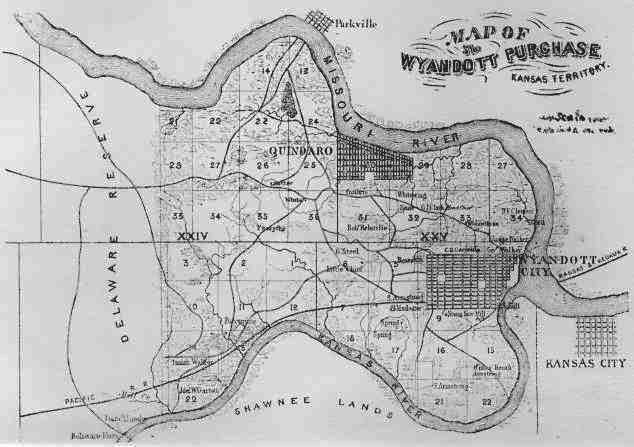
The 12 historical markers are accompanied by a map
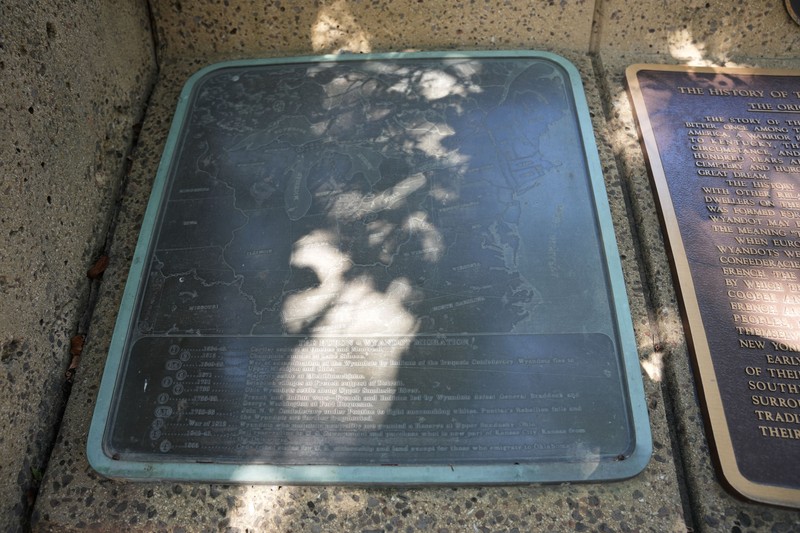
The 1st marker
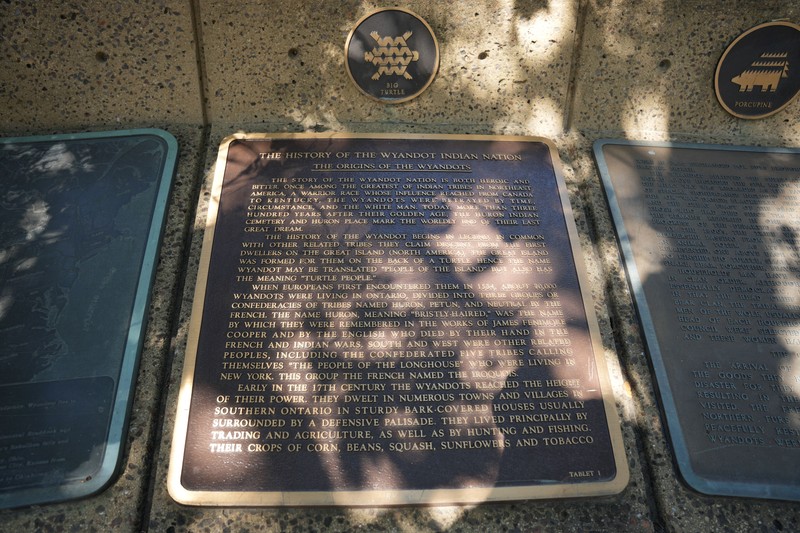
The 2nd marker
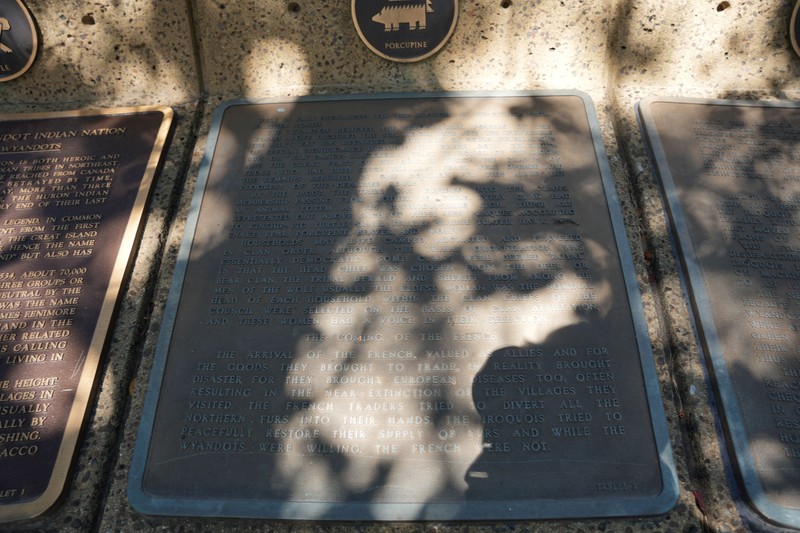
The 3rd marker
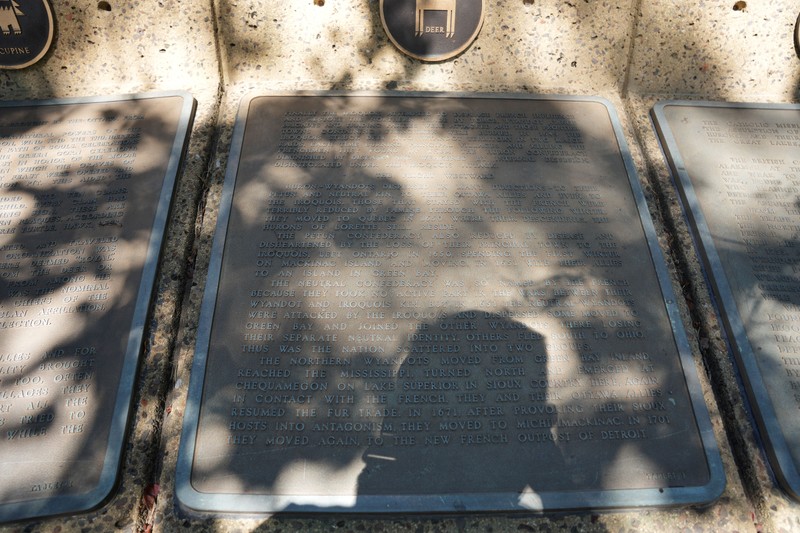
The 4th marker
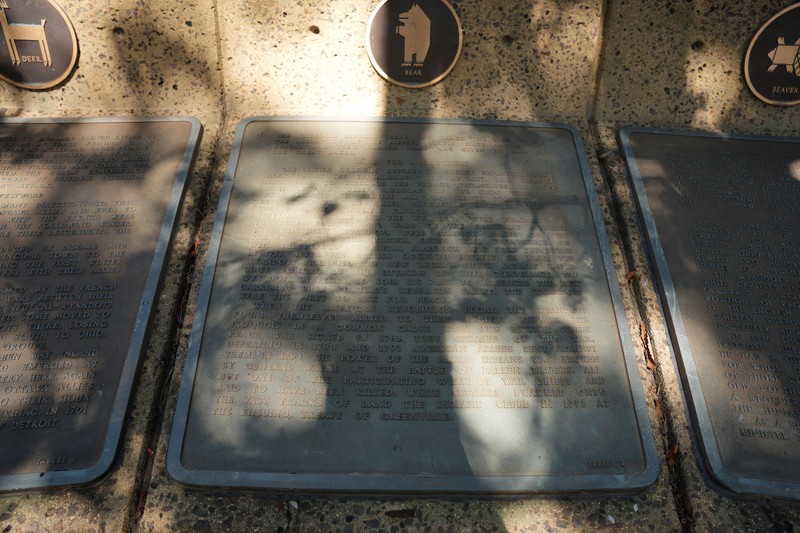
The 5th marker
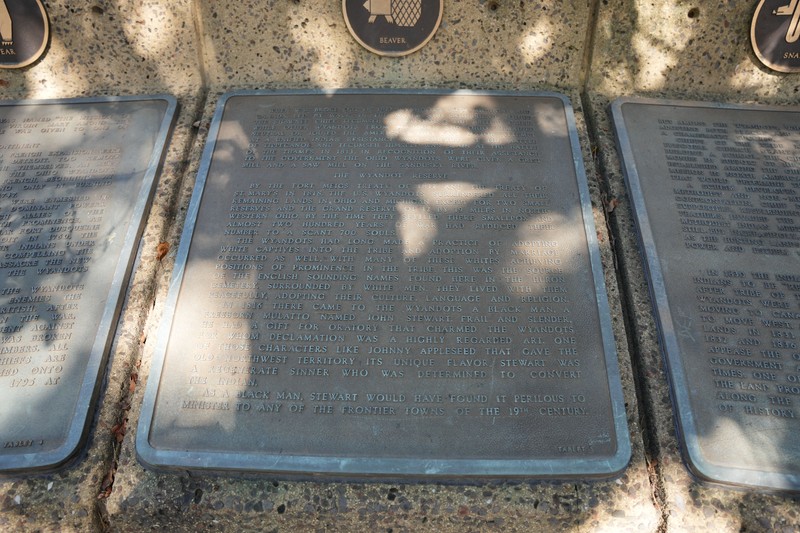
The 6th marker
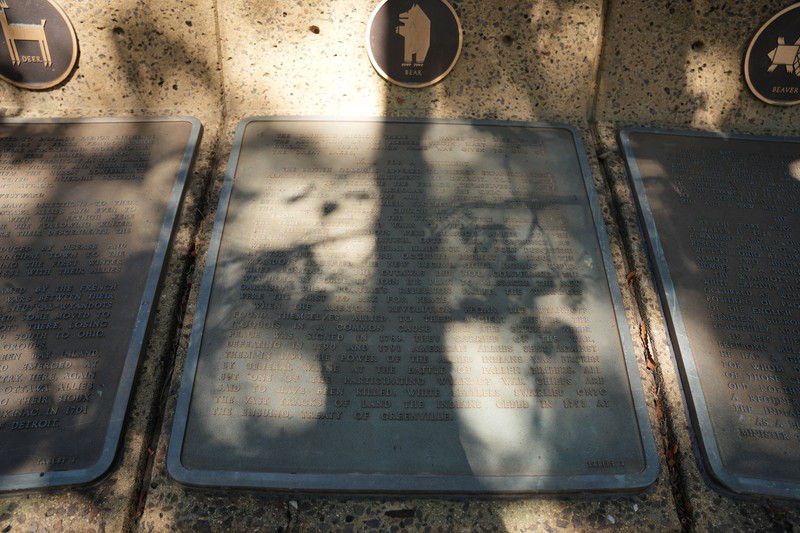
The 7th marker
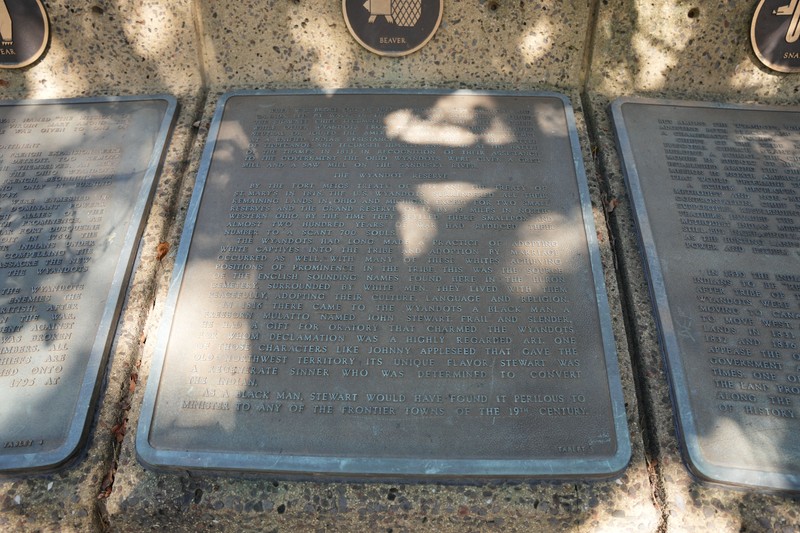
The 8th marker
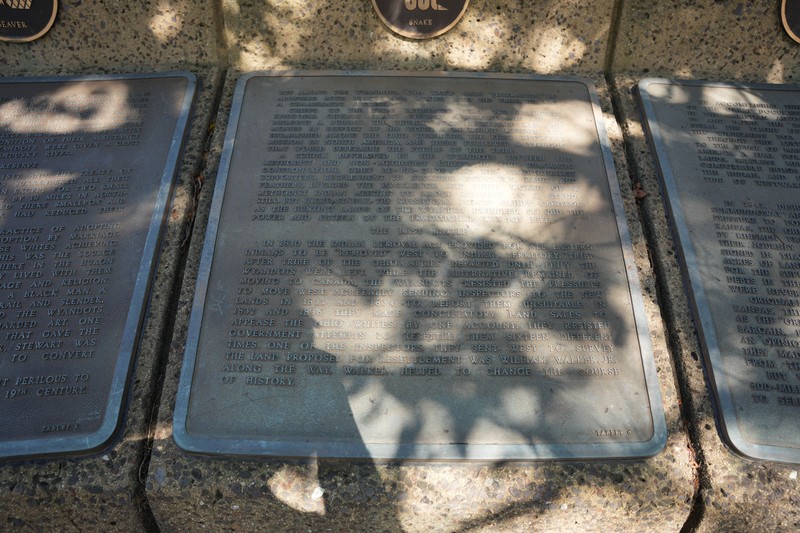
The 9th marker
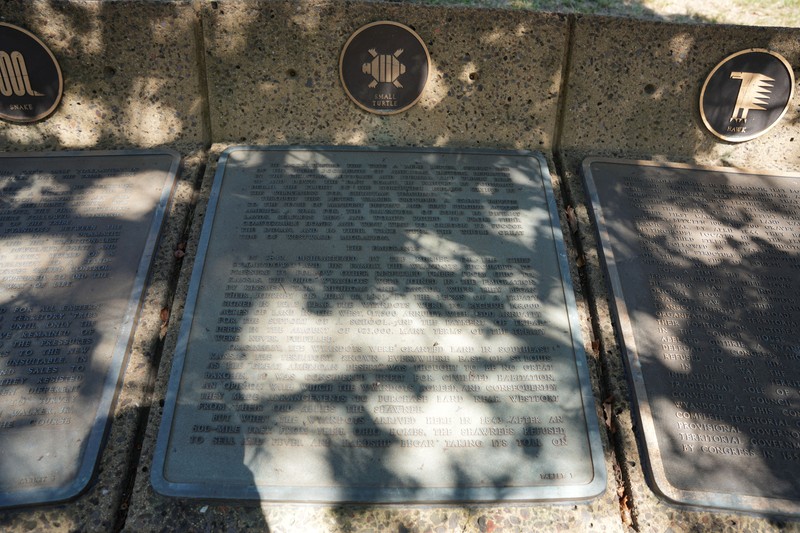
The 10th marker
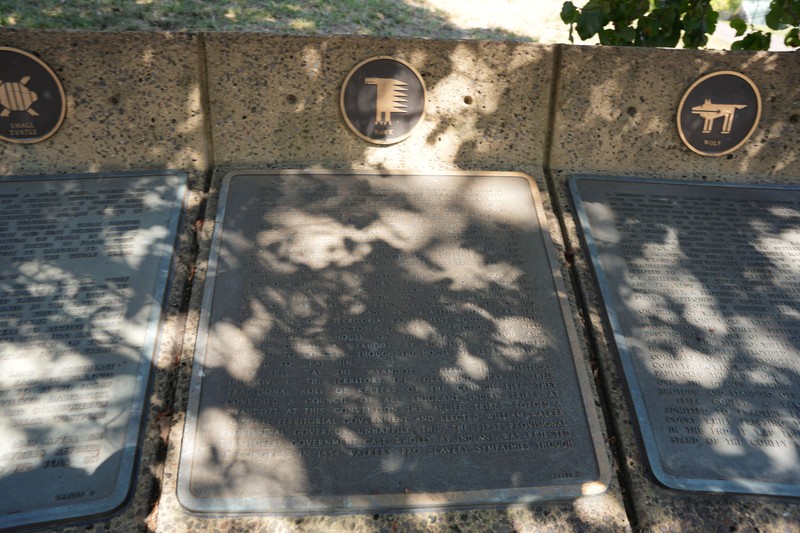
The 11th marker
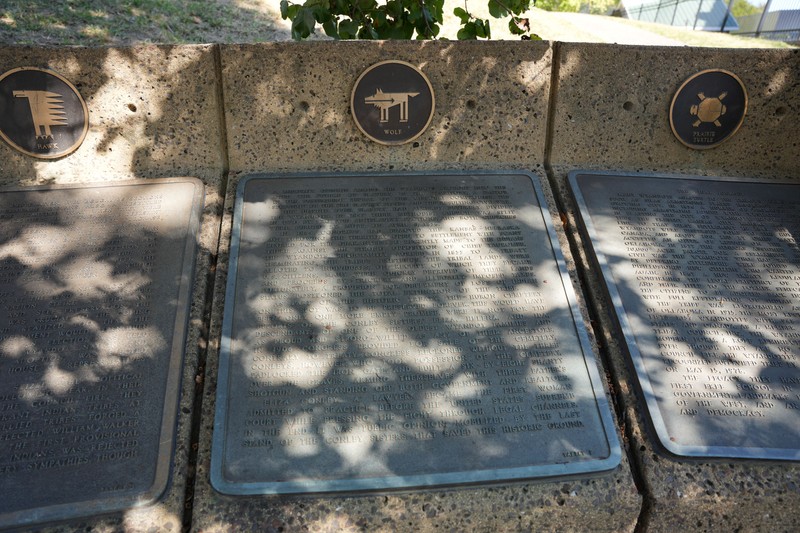
The 12th marker
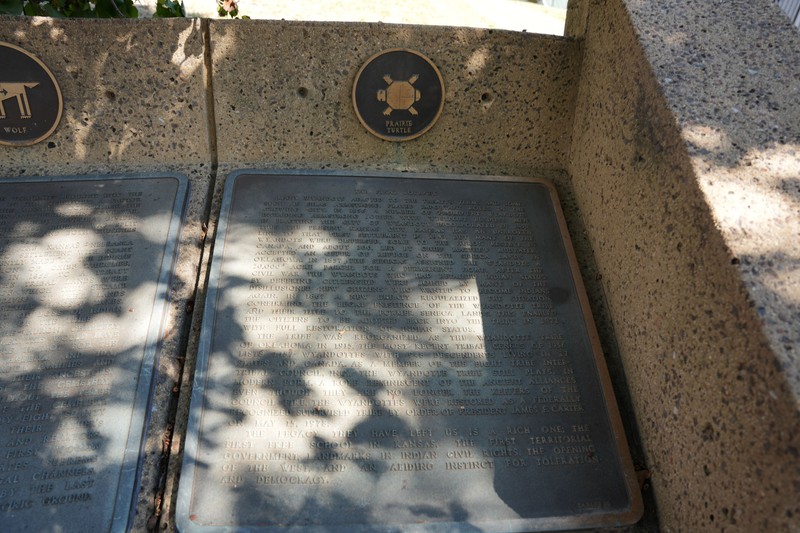
Backstory and Context
Text-to-speech Audio
Wyandot, or Wendat, means “dwellers of a peninsula/island.” [2] Prior to European arrival, the Wyandot lived primarily around the St. Lawrence River and Georgian Bay of Lake Huron in Ontario. At its peak, the Wyandot Confederacy was believed to have had a population of around 20,000-40,000. [3] The French who encountered the Wyandot called them Huron, although only some of the Wyandot tribes were part of the Huron Confederacy [4]. The Wyandot were related culturally and linguistically to the Iroquois, although they fought aggressively with other Iroquois tribes. In 1649, the Wendat Confederacy was defeated by the Iroquois (who had allied with the English and Dutch) and was forced to relocate further southwest to modern-day Michigan and along the Ohio River Valley.
In 1830, the Indian Removal Act was passed, calling for all Native Americans to be moved west of the Mississippi River to "open" the area to European settlement. The Wyandot managed to hold on to their lands for over a decade after the act was passed despite increasing encroachment and violence. In 1840, white settlers killed Wyandot chief Summundowat, and the murder went unpunished by authorities. Finally, in 1842, the Wyandot signed a treaty with the US Government that guaranteed them 148,000 acres of land in modern-day Kansas, as well as an annuity. [1]
In the summer of 1843, about 700 members of the Wyandot nation, the last remaining organized Native American group in Ohio, left for Kansas territory via wagon and steamship in what has since been called “Ohio’s Trail of Tears”. The US Government failed to fulfill terms of the treaty, so the Wyandot set up a makeshift camp along the Kansas River. Poor living conditions in the new climate and flooding led to disease and malnutrition. A measles epidemic wiped out between 100-200 people in the community, including many small children, within a year of arriving. Many of the victims were buried in what is now known as the Huron Indian Cemetery. [1]
Late in 1843, the Wyandot purchased land from the Delaware tribe that today encompasses Kansas City and began to set up a home for their community. According to the diary of William Walker, Jr, a notable Wyandot politician: “They brought with them from Ohio a well-organized Methodist Church, a Free Mason's Lodge, a civil government, and a code of written laws which provided for an elective Council of Chiefs, the punishment of crime and the maintenance of social and public order.” [5] To prevent further relocation, the Wyandots formed their own territorial government with representatives, which Congress repeatedly rejected. [6] The Wyandots, like the rest of the country at the time, were divided on the issue of slavery. Several Wyandots, including William Walker, Jr, owned slaves, but others opposed it and joined the abolitionist community of Quindaro to the north of Kansas City.
The Kansas-Nebraska Act of 1854 "reopened" land occupied by Native American tribes to white settlement. The next year, some Wyandots signed a treaty giving up their lands in exchange for US citizenship. Many decided to move on to Indian Territory in Oklahoma. According to Encyclopedia Britannica: “The Wendat Confederacy was reaffirmed in 1999, with a document signed by the four constituent members of the confederacy: the Huron Wendat of Wendake (Quebec, Canada), Wyandotte Nation of Oklahoma, Wyandot Nation of Kansas, and the Wyandot of Anderdon Nation (Michigan, U.S.). In the early 21st century, population estimates indicated some 3,500 Wendat descendants.” [7]
Cite This Entry
Nickel, Jamie and Clio Admin. "History of the Wyandot Nation in Kansas Historical Marker ." Clio: Your Guide to History. October 4, 2023. Accessed July 30, 2025. https://theclio.com/tour/991/7
Sources
1. Littlefield, Daniel F. Jr., James W. Parins. Encyclopedia of American Indian Removal. ABC-CLIO: 2011. https://books.google.com/books?id=Yx46lWJKphEC&ppis=_c&printsec=frontcover&source=gbs_ge_summary_r&cad=0#v=onepage&q&f=false.
2. Stansfield, Rick. “Wyandotte (tribe).” The Encyclopedia of Oklahoma History and Culture. Accessed 27 September 2019. https://www.okhistory.org/publications/enc/entry.php?entry=WY001.
3. Franklin County Historical Society. “Wyandot.” Freedom’s Frontier National Heritage Area. Accessed 27 September 2019. http://www.freedomsfrontier.org/pages/Wyandot.
4. Divine, Llyod. “A Brief Profile.” Wyandotte Nation. Accessed 27 September 2019. https://www.wyandotte-nation.org/culture/profile/
5. Walker, William, Jr. “The Wyandots, From the Journal of William Walker, Jr.” Wyandot Nation of Kansas. Accessed 27 September 2019. https://www.wyandot.org/ww1.htm.
6. “The History of the Wyandot Indian Nation” historic marker. Kansas City, KS. Inscription accessed 27 September 2019 at https://www.hmdb.org/Marker.asp?Marker=72957.
7. The Editors of Encyclopaedia Britannica. “Wendot Confederacy.” Encyclopedia Britannica. 17 June 2015. Accessed 29 September 2019. https://www.britannica.com/topic/Wendat-Confederacy.
Photo by David Trowbridge
https://commons.wikimedia.org/wiki/File:William_Walker_(Wyandot_leader).jpg
http://www.freedomsfrontier.org/pages/Wyandot
https://www.wyandotte-nation.org/wp-content/uploads/2012/11/Wyandotte-History-Brochure-v3.pdf
https://martincitytelegraph.com/2018/11/23/the-trail-of-tears-of-the-wyandot-indians/
Photo by David Trowbridge
Photo by David Trowbridge
Photo by David Trowbridge
Photo by David Trowbridge
Photo by David Trowbridge
Photo by David Trowbridge
Photo by David Trowbridge
Photo by David Trowbridge
Photo by David Trowbridge
Photo by David Trowbridge
Photo by David Trowbridge
Photo by David Trowbridge
Photo by David Trowbridge

